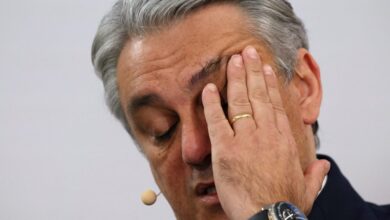Navigating Bond Market Volatility, Money Managers’ Strategies in a Shifting Landscape

In a year marked by anticipation of an impending recession in the United States, several prominent money managers embraced a bold strategy of investing in government bonds. These investment experts hoped that their move would counteract the losses incurred during the challenging market conditions of the previous year. However, their strategy has encountered new challenges as the market experiences increased volatility, leaving them with subpar returns and testing their resilience in the face of ongoing sell-offs.
The most recent week was particularly trying for these investors. The annual returns on US government bonds slipped into negative territory as Treasury yields reached levels not seen in 15 years. This development reflects a prevailing view that interest rates might remain elevated for an extended period, with the economy proving its capacity to sustain such conditions.
Bob Michele, a notable bond advocate and the Chief Investment Officer for fixed income at J.P. Morgan Asset Management, remains undeterred in the face of these challenges. Michele, who accurately predicted the decline in Treasury yields from 2% to nearly zero in 2019, has adopted a new approach: buying into dips in bond prices. This strategy is his response to the recent market fluctuations and the belief that the bond market will rebound.
However, the flagship Global Bond Opportunities Fund managed by J.P. Morgan Asset Management has experienced a 1.5% decline in the past month, surpassing only 35% of its peers in performance for the year. This stands in stark contrast to its 83% ranking over the previous five years, indicating the current market turbulence.
Other asset management firms, including Allianz Global Investors, Abrdn Investments, Columbia Threadneedle Investments, and DoubleLine Capital, share similar views on the economic landscape. These firms believe that the economy has yet to fully absorb the effects of the Federal Reserve’s five-percentage-point rate hikes. They point to the occurrence of a deeply inverted yield curve, a historically reliable signal of an impending recession, as evidence supporting their perspective.
“We don’t think this time it’s different,” asserts Michele. He maintains that while the time between the first rate hike and an actual recession may be prolonged, an array of indicators suggests that the US economy is either already in a recession or on the brink of entering one.
To manage the risks associated with their bond portfolios, some managers have been making temporary adjustments to the duration of their holdings, even if these changes contradict their long-term views. For instance, Columbia Threadneedle’s Gene Tannuzzo has reduced duration and shifted toward shorter-dated Treasuries as the yield curve deepened its inversion. This strategic move has contributed to the Strategic Income Fund’s robust performance, outperforming 82% of its competitors.
Despite the ongoing uncertainties, some managers continue to hold overweight positions in duration. Abrdn and Allianz are among these firms, while DoubleLine has balanced its exposure to long-dated bonds by including short-dated corporate debt in its portfolio.
Historical data reveals that rate hikes have often coincided with economic downturns. However, the correlation between rising yields and contracting economies in the current context is less clear. An essential factor shaping the dynamics is the evolving borrowing requirements of the US and other affluent economies. These economies have shown willingness to tolerate deficits to fund various priorities, such as addressing aging populations, defense spending, and environmental commitments.
As a consequence of heightened debt issuance, investors are expected to demand higher yields. Despite this backdrop, riding the wave of short-Treasury positions has proven to be challenging in 2023. For example, the Virtus AlphaSimplex public mutual fund (ticker ASFYX) has faced a decline of approximately 6% this year. While the fund’s strategy seemed well-positioned to benefit from the prevailing market conditions, significant downturns occurred during the banking crisis in the first quarter. According to Kathryn Kaminski, Chief Research Strategist and Portfolio Manager at AlphaSimplex Group, the belief is that rates will remain elevated, justifying the fund’s short position.
Looking ahead, there is cautious optimism among these money managers. J.P. Morgan’s Michele is confident that bond yields will decrease once the Federal Reserve concludes its tightening cycle, potentially long before any rate cuts occur. He asserts that regardless of whether the US economy faces a recession or a softer landing, the bond market is likely to rally post the final rate hike. While the Federal Reserve may keep rates stable for an extended period, the pace of growth and inflationary pressures are expected to decelerate. These dynamics will shape the bond market’s trajectory in the coming months, providing both challenges and opportunities for investors.



